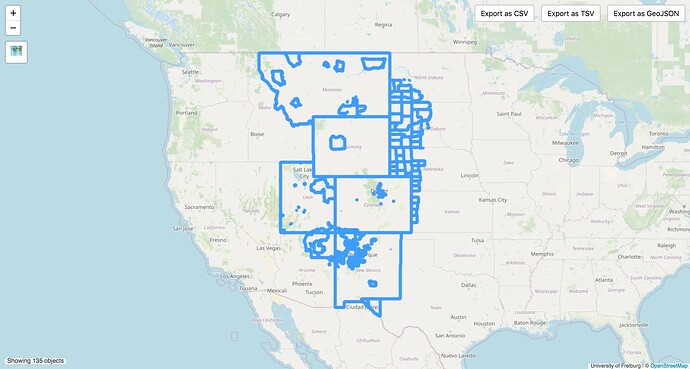You’re right, I copy-pasted the 1,134 figure from my response above, but I forgot that that figure represents the number of elements that need to be tagged with a timezone due to dissolving the Central Time Zone, including plenty of counties in the neighboring Mountain and Eastern time zones. So while the figure is still a stark rebuttal to the original relation-less proposal, it isn’t relevant to the relation you’re describing. Sorry for the confusion.
If we were to model the Central Time Zone relation as you describe, then it would have these 631 boundary relations as subarea members, plus the 12 artificial timezone boundaries along non-administrative features. So there would be a 17% reduction in the number of members in this relation.
Meanwhile, the Mountain Time Zone relation would have these 135 members, plus 16 synthetic boundary relations along these non-administrative features, representing a 74% reduction.
Nevertheless, I think my other points stand:
- This sort of relation would clearly run afoul of the “Relations are not categories” principle. What do the Town of West Wendover in Nevada, Tooele County in Utah, and the State of Colorado have to do with Dunn County in North Dakota, other than the fact that all happen to observe Mountain Time and lie within the real-world Mountain Time Zone boundary?
- This modeling makes it more difficult to determine whether there are any gaps in the relation. If today’s relation is fragile, imagine the same fragility but more difficult to detect.
What’s more, in order to load the actual real-world time zone boundary’s geometry, you have to load an inordinate number of county and state boundary ways that don’t run along the actual boundary. This slimmed-down Mountain Time Zone relation may have only 151 members, but you’d have to recursively load around 5,695 ways representing a superset of the geometry. I’m not talking about what it takes to turn the geometry into something useful; this is just what it takes to load the whole relation, so you don’t end up breaking it while editing something unrelated.
The desire for optimization is commendable, but this feels like overengineering to me.


